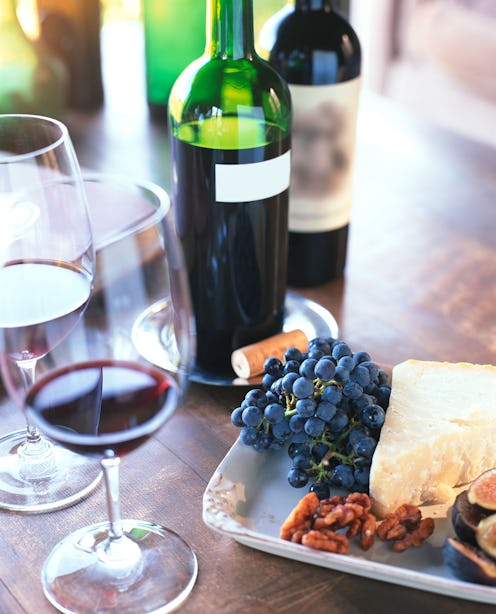If there’s one thing we know for sure about wine, it’s that we really enjoy drinking it. Beyond that, things start to get hairy—no matter how many times we’ve been to a tasting, it’s hard to remember all the nitty gritty about every varietal (especially with each poured glass). Truth is, there will always be more to learn on the topic, and unless you’re a sommelier—in which case, you’re living the dream—you shouldn’t expect yourself to be an encyclopedia of knowledge. That said, if you, too, enjoy wine it doesn’t mean you should be totally clueless about it. To make sure you’ve got the need-to-know basics covered, we tapped Katie Owen, Wine Director at Winc, to answer some commonly posed questions. Read on with a glass of rosé in hand.
Wine 101
"When it comes to pairing wine with food, it's important to remember that every varietal encompasses a wide range of styles, so what works for one cabernet sauvignon, say, might not work for another. But broadly speaking, these are safe bets:
Chardonnay: Unoaked Chardonnay usually pairs well with lighter pasta and seafood. Fuller-bodied, oaked Chardonnay can stand up to bigger dishes like rich fish, pasta with creamy sauces and meals with a buttery component.
Sauvignon Blanc: White meat, fish, dishes with an herbal component (basil, parsley, mint, etc.) and goat cheese.
Pinot Grigio: Fresh veggies, ceviche, light shellfish and Gruyère.
Rosé: It can run the gamut from dry to off-dry to sweet, and its range of aromas (raspberry, lime, cranberry, flowers) and flavors (tart citrus, juicy red fruit, wet stone) means it partners equally well with seafood and shellfish or hot dogs and burgers. You can pair rosé with pretty much anything.
Pinot Noir: Like rosé, pinot noir goes beautifully with a wide variety of dishes. Try with salmon, roast chicken, mushrooms and creamy cheeses.
Merlot: Pizza, pasta with tomato sauce and pork chops.
Cabernet Sauvignon: Lamb, steak, burgers, pizza and cheddar."
"Fruit-forward red blends or crisp rosés are solid choices—but make sure you go for options with a dry finish, since sweet wine can often be polarizing. A red blend will give you bold, juicy fruit with some oomph and structure, and a crisp rosé will act as an easy-to-drink refresher. Plus, these both go great with a variety of party foods."
"Generally speaking, the main difference between the two is the amount of oxygen they allow into a wine over time. Corks allow a small amount of oxygen to enter a bottle during the aging process, and screw caps don't—so they're often used to keep a wine tasting fresh and young.
There are certainly pros and cons when it comes to both. Cork is naturally occurring, and it's been the preferred method of bottle sealing for centuries. But it's also expensive, and it's not foolproof; a percentage of corks develop what's called 'cork taint,' which effectively ruins the wine in the bottle. And, on a surface level, corks can be difficult to open.
Screw caps, on the other hand, are almost too easy to open, but they're (mistakenly) associated with cheap wine. They're recyclable but not biodegradable like cork, and many feel they're inferior when it comes to aging wine, although there are some studies refuting this."
"Tannins are naturally occurring plant polyphenols that are found in the skins, stems and seeds of wine grapes (as well as in tea, chocolate, and other fruits). Because white wine doesn't usually experience skin, stem or seed contact during the winemaking process, you won't often hear people talk about tannins in relation to whites (although they are present). Red wine, on the other hand, does experience that contact, so tannins are generally associated with reds. They affect the mouthfeel and texture of a wine, producing a drying effect in the mouth and causing it to pucker."
"Sulfites (aka sulfur dioxide) in wine are either natural or added. Natural sulfites arise during fermentation, and all wines contain them. Added sulfites are used to preserve a wine's freshness and to prevent oxidation. As for how they affect people—generally, they don't at all. There's a widespread misconception that sulfites are somehow harmful to humans, but that's actually not the case—unless you have a legitimate sulfite allergy, which is relatively rare (at least compared to the amount of people who believe they have sulfite sensitivity) and is often connected to another condition such as asthma."
"It depends on the type of wine. If you open a bottle of bubbly, seal it with a sparkling stopper and pop it in the fridge, it'll retain its fizz for up to three days. You'll get four or five days out of re-corked, refrigerated whites and rosés. A re-corked red will keep for up to three days out of the fridge (although it's best to drink it before the third day), but you can get a couple extra days out of it if you refrigerate it after the first open."
